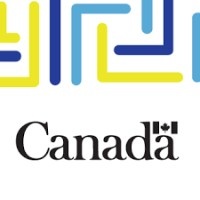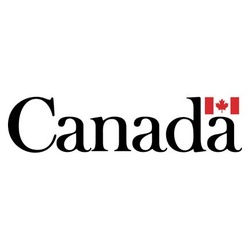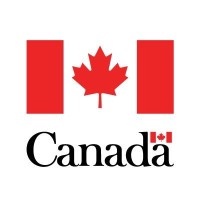
Trucking HR Canada – Student Work Placement Subsidy
At a glance
- Maximum amount : 7,000 $
- Up to 70% of project cost
- Open Date : September 1, 2024
- Closing date : December 1, 2024
- Transportation and warehousing
- Canada
- Financial cooperative
- Non-profit
- Public or Parapublic institution
- For-profit business
- Sole proprietorship
- Social economy enterprise
- Non-financial cooperative
- All revenue ranges
- All organization sizes
- Canadians
- Youth (<40)
- Startups
- Higher Education
- Employment and Training
- Young adults
- New immigrants & refugees
- Business owners / entrepreneurs
- Academia / students
- All structures
- National
Overview
The Student Work Placement Subsidy program aims to enhance the job readiness of students enrolled in post-secondary programs by offering wage subsidies to employers. Employers can receive up to 70% of wages, capped at $7,000 per student, for providing work placements lasting between 4 to 16 weeks. Eligible activities include offering full-time or part-time work directly related to the student's field of study, ensuring placements are not funded by other federal grants, and providing a safe, harassment-free work environment.
Activities funded
The subsidy aims to enhance student job readiness while benefiting employers. Eligible activities include hiring students in roles that support work-integrated learning aligned with their post-secondary studies.
- Employment in positions related to the student's field of study.
- Work placements that provide a minimum of 4 weeks to a maximum of 16 weeks, with at least 10 hours of work per week.
- Projects that build strong connections between students and various company roles.
- Opportunities that offer meaningful workplace experiences contributing to students' academic and professional growth.
Eligibility
Employers must meet specific conditions to be eligible for the Student Work Placement Subsidy grant.
- Employ students who are Canadian citizens, permanent residents, or individuals granted refugee status in Canada.
- Ensure students can provide proof of enrollment (either part-time or full-time) in a Canadian post-secondary institution.
- Offer work placements that are full-time or part-time (minimum 4 weeks to 16 weeks and at least 10 hours per week) and are directly related to the student's program of study.
- Confirm that the work placement is not funded by any other Federal Grant Program.
- Add participating students to the company’s payroll, as the program does not accept contractors.
- Provide a safe and harassment-free work environment for the participants.
- Submit evidence of salaries remitted to the participants by providing pay stubs for reimbursement.
Who is eligible?
Employers who wish to participate in the Student Work Placement Subsidy must hire students who meet the following criteria:1. Nationality and Status: Students must be Canadian citizens, permanent residents, or persons granted refugee status in Canada.2. Student Enrollment: Students must provide proof of part-time or full-time enrollment in a Canadian post-secondary institution.3. Work Eligibility: Students must be legally entitled to work in accordance with relevant provincial or territorial legislation and regulations. Additionally, employers are required to:1. Work Conditions: Offer work placements that provide full-time or part-time job opportunities directly related to the student's program of study. These placements must be at least 4 weeks long and no longer than 16 weeks, with a minimum of 10 hours per week.2. Payroll Integration: Add participating students to the company's payroll, as participants are not eligible to be hired as contractors under this program.3. Safety and Environment: Ensure a safe and harassment-free work environment for all participants.4. Salary Documentation: Provide evidence of salaries remitted to participants (e.g., pay stubs) for reimbursement purposes.Eligible expenses
The Student Work Placement Subsidy supports activities that integrate post-secondary students into workplace environments, providing them with practical experience related to their studies. The program is designed to prepare students for future employment while aiding employers in developing a skilled talent pool without incurring significant training costs.
- Hiring students for work placements that are part of their post-secondary programs.
- Providing students with relevant, hands-on work experience in fields related to their academic studies.
- Facilitating the transition of students from academic settings to workplace environments.
- Offering structured learning opportunities within the company's operations.
- Enhancing students' job readiness and skills through real-world work experience.
How to apply
Verify Eligibility
- Ensure your organization hires students who meet the citizenship, enrollment, and legal work authorization requirements.
- Check that the work placement fits the prescribed duration and hours and is not funded by another federal grant program.
Prepare Work Placement Details
- Outline the work placement terms, ensuring they align with the student’s program of study.
- Ensure the work environment is safe and free from harassment.
Engage with THRC
- Contact Trucking HR Canada at [email protected] for guidance and partnership opportunities.
- Utilize their support in building connections with post-secondary institutions.
Application Submission
- Complete any required application forms provided by Trucking HR Canada or relevant partners.
- Gather and prepare all required documents, including proof of student employment and payroll records.
- Submit your application package as per the instructions provided by Trucking HR Canada.
Reimbursement Process
- After hiring, keep accurate records of wages paid and submit pay stubs for reimbursement.
- Follow any additional instructions provided for accessing wage subsidy funds.
Additional information
This grant supports employers in hiring post-secondary students with wage subsidies, aiding in their job readiness and contributing to a skilled future workforce.
- Employers can receive up to $7,000 in wage subsidies per student.
- Work placements must last between 4 to 16 weeks, with a minimum of 10 hours per week.
- Students must be Canadian citizens, permanent residents, or persons granted refugee status in Canada.
- Participants must be enrolled part-time or full-time in a Canadian post-secondary institution.
- Employers must ensure a safe and harassment-free work environment.
- Work placements must not be funded by any other Federal Grant Program.
- Participants must be hired as employees, not contractors.
- Evidence of salaries (pay stubs) must be submitted for reimbursement.
- Trucking HR Canada provides step-by-step guidance and support throughout the program.
- Applications for Fall 2024 are open.
Frequently Asked Questions about the Trucking HR Canada – Student Work Placement Subsidy Program
What is the Trucking HR Canada – Student Work Placement Subsidy?
How much funding can be received?
What expenses are eligible under Trucking HR Canada – Student Work Placement Subsidy?
What is the deadline to apply?
Is the Trucking HR Canada – Student Work Placement Subsidy a grant, loan, or tax credit?
Who are the financial supporters of the Trucking HR Canada – Student Work Placement Subsidy?
Who is eligible for the Trucking HR Canada – Student Work Placement Subsidy program?
Who can I contact for more information about the Trucking HR Canada – Student Work Placement Subsidy?
Where is the Trucking HR Canada – Student Work Placement Subsidy available?
Are startups eligible for the Trucking HR Canada – Student Work Placement Subsidy program?
Are youth (under 40) eligible for the Trucking HR Canada – Student Work Placement Subsidy program?
More programs like this

Incentives for medium and heavy-duty zero-emission vehicles (iMHZEV) Program
Transport Canada
Green Freight Program — Assess and Retrofit
Natural Resources Canada (NRCan)
Green Freight Program — Repower and Replace
Natural Resources Canada (NRCan)
Enhanced Road Safety Transfer Payment Program (ERSTPP)
Transport Canada
Advancing Accessibility Standards Research
Accessibility Standards Canada
Critical Minerals Infrastructure Fund – Shovel ready Stream
Government of Canada
On-road Transportation Decarbonization — R&D Projects
Natural Resources Canada (NRCan)
Critical Minerals Infrastructure Fund – Preconstruction Stream
Government of Canada
Zero Emission Vehicle Awareness Initiative — Medium- and Heavy-Duty Vehicles and Clean Fuels
Natural Resources Canada (NRCan)